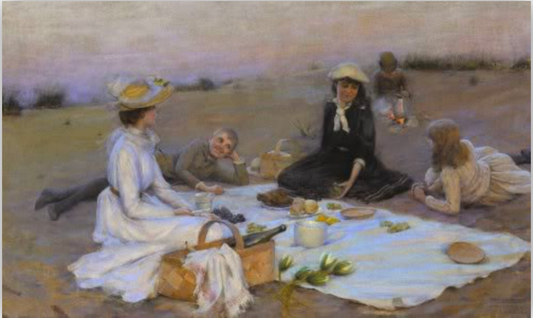
International Polar Bear Day - February 27
Share
Climate change is a huge threat to polar bears’ existence, as their natural habitat is the sea ice of the Arctic Ocean, which is melting away beneath them. International Polar Bear Day is an opportunity to remind ourselves what is at stake here, and to help preserve the future of these magnificent mammals.
The Kool Bag Co.
10 facts you might not know about polar bears:
- More than two thirds of the world’s polar bears can be found in Canada, which means as Canadians, we have a unique responsibility to protect this iconic Arctic animal.
- Polar bears actually have black skin - their fur is transparent with a hollow core that reflects and refracts light from the sun and off the snow, making it appear white. This helps them keep warm as their fur captures heat from the sun, directing it down the hair shaft so that it can be absorbed by their skin.
- Polar bears typically give birth to twins - this evolutionary adaptation increases the likelihood that at least one cub will survive to adulthood, especially given the harsh and unforgiving conditions found in their Arctic habitat.
- They are marine mammals - their snout, head and body are longer and more streamlined than other bears, allowing them to swim more efficiently. Their large wide paws act as paddles to propel them through the water and their hind paws act as rudders helping them steer.
- They are the largest land carnivore - male polar bears can grow up to 2.8 metres long and 800 kilograms in weight.
- They are tiny and helpless at birth - When born, cubs are blind, toothless and covered in a sparse layer of soft, short fur. Newborn cubs are only about 25 cms long and weigh around 1 kg, but they grow rapidly thanks to their mother’s rich milk which is approximately 31% fat.
- Polar bears need sea ice to catch seals by waiting for them to surface at their breathing holes in the ice, stalking them sunbathing on the sea ice, and by breaking into the birthing chambers of ringed seals. These skills are invaluable to a polar bear’s survival and inherently make them heavily reliant on sea ice.
- The polar bear's footpads provide terrific grip! The bottom of a polar bear’s footpads are covered by small bumps, called papillae, which help them to grip the ice and avoid slipping. The tufts of fur between their toes also help with this task, making them “slip resistant.” Polar bears also have extremely thick, sharp and strong claws, which they can use to help gain further traction when walking on ice.
- Polar bears can fast for up to 8 months - When the summer rolls around and the sea ice retreats, polar bears head towards land, surviving mostly off of the fat stores they accumulated over the winter by eating seal blubber.
- Polar bears are called “Nanuq” in Inuktitut - it means an animal worthy of great respect, or the ever wandering one. Polar bears hold great spiritual and cultural significance for Inuit communities.
We chose the polar bear as the icon for our logo, not only because we love and respect this majestic animal, but also because we want our cooler bags to reflect the strength, resilience and adaptability of these magnificent creatures.
For further information on what is being done to protect our oceans, go to oceana.ca.



